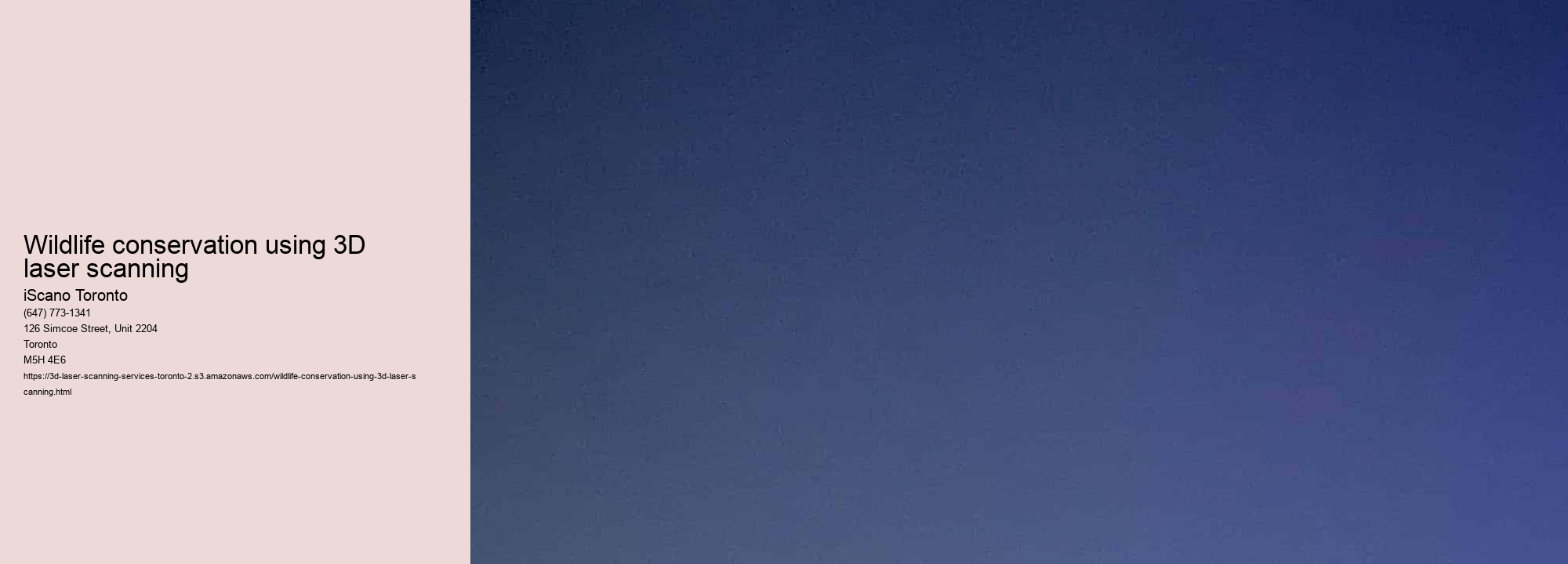Navigating the Future: Just How 3D Laser Scanning Services Are Changing Industries
Wildlife conservation using 3D laser scanning .Introduction
In the world of technical innovation, few technologies have been as transformative as 3D laser scanning services. These innovative devices have actually revolutionized sectors by offering unparalleled accuracy, performance, and convenience. From architecture to archaeology, from producing to medicine, the applications of 3D laser scanning are vast and continuously increasing. In this write-up, we look into the complexities of this technology and explore how it is reshaping the landscape of numerous industries.
Understanding 3D Laser Scanning
At its core, 3D laser scanning is a non-contact, non-destructive modern technology that catches the form, dimension, and information of items or atmospheres by releasing laser light beams. These light beams jump off the surface areas they come across, and the scanner gauges the moment it takes for each beam of light to return, thereby developing a factor cloud—-- a collection of numerous data factors that stand for the things'' s geometry in 3 dimensions.
The Benefits of 3D Laser Scanning
Among the main benefits of 3D laser scanning is its unequaled precision. Typical methods of dimension frequently fall short in catching complicated geometries or elaborate information, bring about inaccuracies and inefficiencies. With 3D laser scanning, however, also the most elaborate surface areas can be caught with accuracy down to the millimeter, guaranteeing that every detail is accounted for.
Moreover, 3D laser scanning is extremely effective. Unlike typical evaluating methods that can be taxing and labor-intensive, laser scanning permits fast information acquisition. A solitary scan can catch countless data points in a matter of minutes, dramatically decreasing the time and resources needed for information collection.
Another considerable advantage of 3D laser scanning is its non-destructive nature. Unlike physical dimensions or intrusive examination approaches, laser scanning does not require direct call with the item being checked, protecting its honesty and minimizing the threat of damages.
Applications Throughout Industries
The adaptability of 3D laser scanning has actually caused its extensive fostering across a myriad of sectors. In style and construction, for example, laser scanning is made use of for as-built documentation, clash detection, and constructing details modeling (BIM). By properly catching existing conditions, architects and engineers can streamline the layout procedure, minimize mistakes, and lower pricey rework.
In the production market, 3D laser scanning plays an important function in quality control, reverse engineering, and fast prototyping. By precisely catching the dimensions of components and items, makers can determine defects, optimize production procedures, and bring items to market much faster.
The effect of 3D laser scanning prolongs past the world of industry and right into areas such as archaeology, forensics, and medical care. Archaeologists use laser scanning to develop thorough 3D models of historical sites and artifacts, allowing for digital preservation and analysis. In forensics, laser scanning is utilized to document criminal activity scenes, accumulate proof, and rebuild mishaps with unrivaled accuracy. In medical care, 3D laser scanning makes it possible for custom-made prosthetics, orthotics, and implants tailored to the one-of-a-kind composition of each client.
Future Trends and Advancements
As modern technology remains to development, the future of 3D laser scanning holds tremendous pledge. One arising pattern is the combination of artificial intelligence (AI) and artificial intelligence algorithms into scanning software, making it possible for automated attribute recognition, information evaluation, and modeling. This assimilation not only boosts the speed and precision of scanning processes but also opens up new possibilities for data-driven understandings and decision-making.
In addition, improvements in hardware, such as the advancement of portable and mobile scanning devices, are making 3D laser scanning more accessible and mobile than ever before. These portable and lightweight scanners encourage customers to record information in remote or tough atmospheres, further broadening the reach of this transformative technology.
Final thought
In conclusion, 3D laser scanning services are reinventing industries around the world, offering unequaled precision, effectiveness, and convenience. From architecture to archaeology, from manufacturing to medicine, the applications of 3D laser scanning are unlimited. As modern technology remains to evolve, the future holds even better pledge, with technologies such as AI combination and portable scanning gadgets positioned to further expand the abilities of this transformative modern technology. In navigating the future, 3D laser scanning will undoubtedly continue to be at the forefront of technology, improving industries and driving progress in the years to find.
